Stallion behavior
The origins of levade and capriole
Many forms of horse behavior we train or observe in the circus, in classical or in liberty dressage can be traced back to the behavior stallions tend to display to overawe others, and thus, to the field of social behavior. Of course, mares can display these forms of behavior too in nature; however, it is much less common than among stallions.
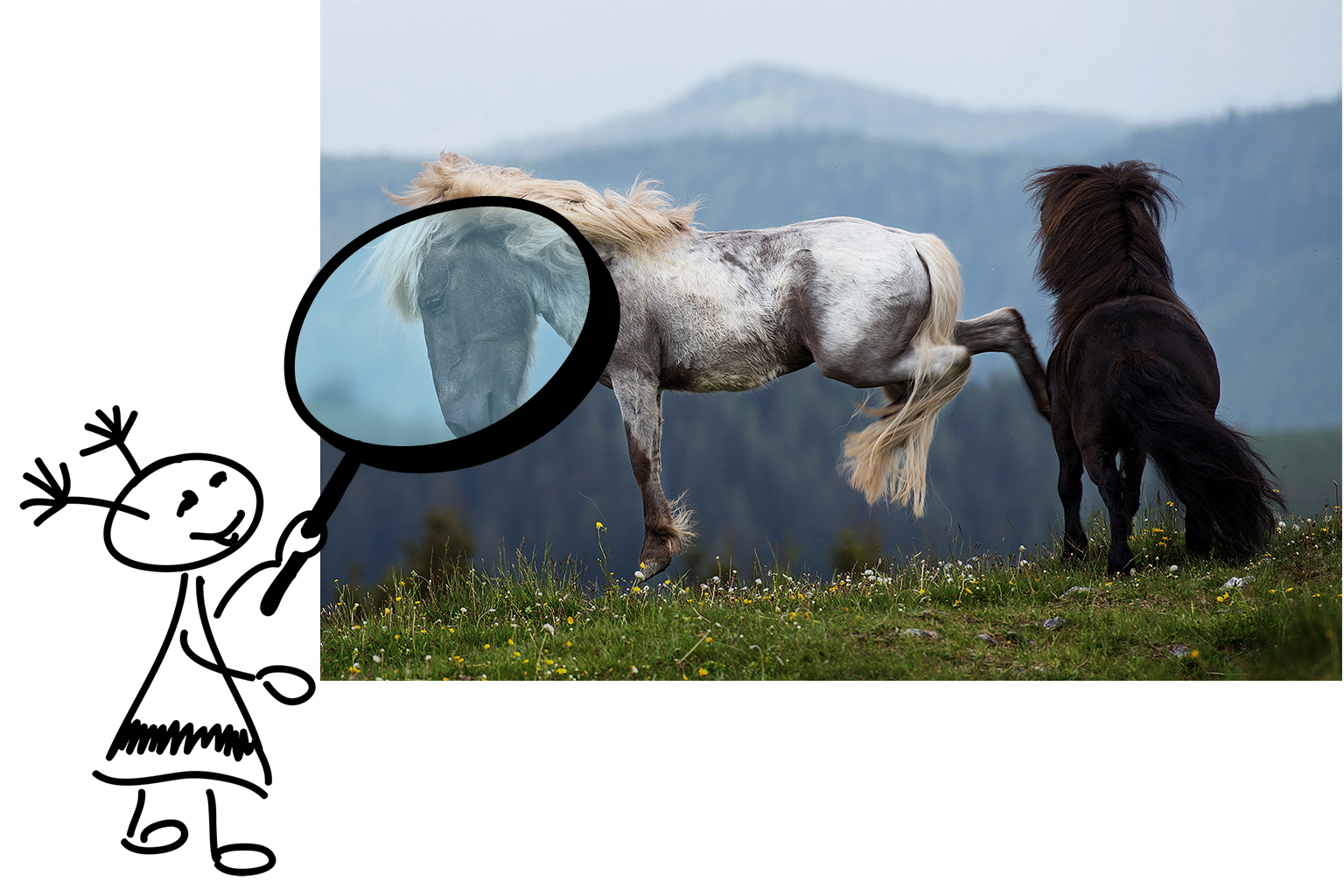
Among stallions
Today we would like to focus on a typical behavioral sequence; we will observe two stallions meeting each other for the first time in the mountain pasture “Sommeralm”. The zoom category here at RPlus invites us to look closely in order to discover and interpret the fine details that make a difference. We aim to grasp the bigger picture, and we want to dive into the world of subtle nuances because this is the key to understand the ritualized behavioral sequence we can observe in the video.
Side note – Off track
Behavioral displays
Behavioral research determines and categorizes the expressive behavior of horses by using various methods. On one hand, we can observe and categorize the level of expressiveness of individual communicative components, or body parts like ears, nostrils or tail in isolation. On the other hand, we can work with so called displays; they are complex “images” of the horses’ social nature. Displays aim to capture behavioral patterns as a whole, and, depending on the question at hand, include combinations with vocalization such as neighing or groaning which are considered as corresponding expressive elements. Behavioral displays that have already been defined by ethology carry specific terms used amongst experts: For example, snaking describes a characteristic, rapid movement with neck and head that includes a threatening facial expression, and is directed towards another individual; however, without moving the legs themselves.
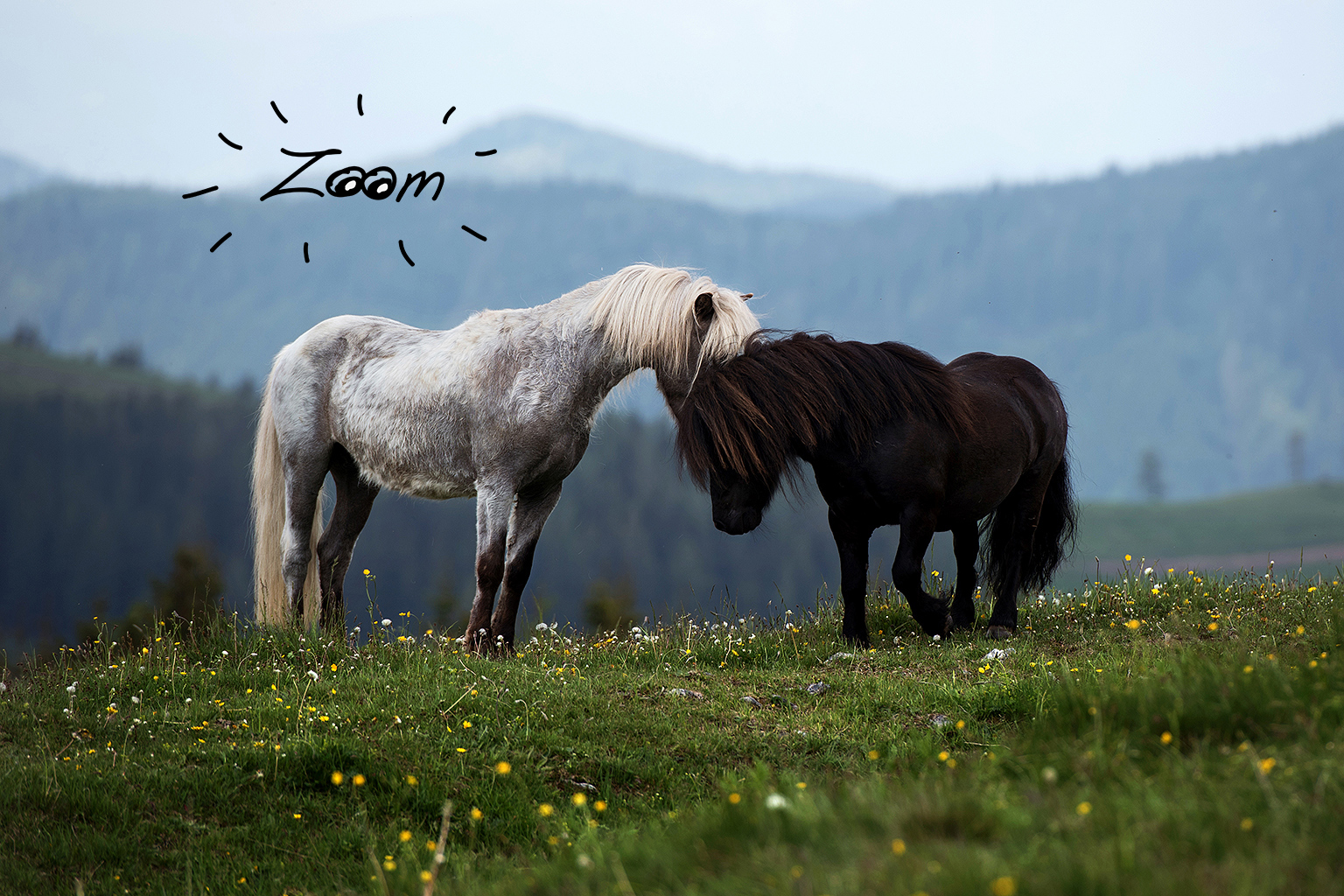
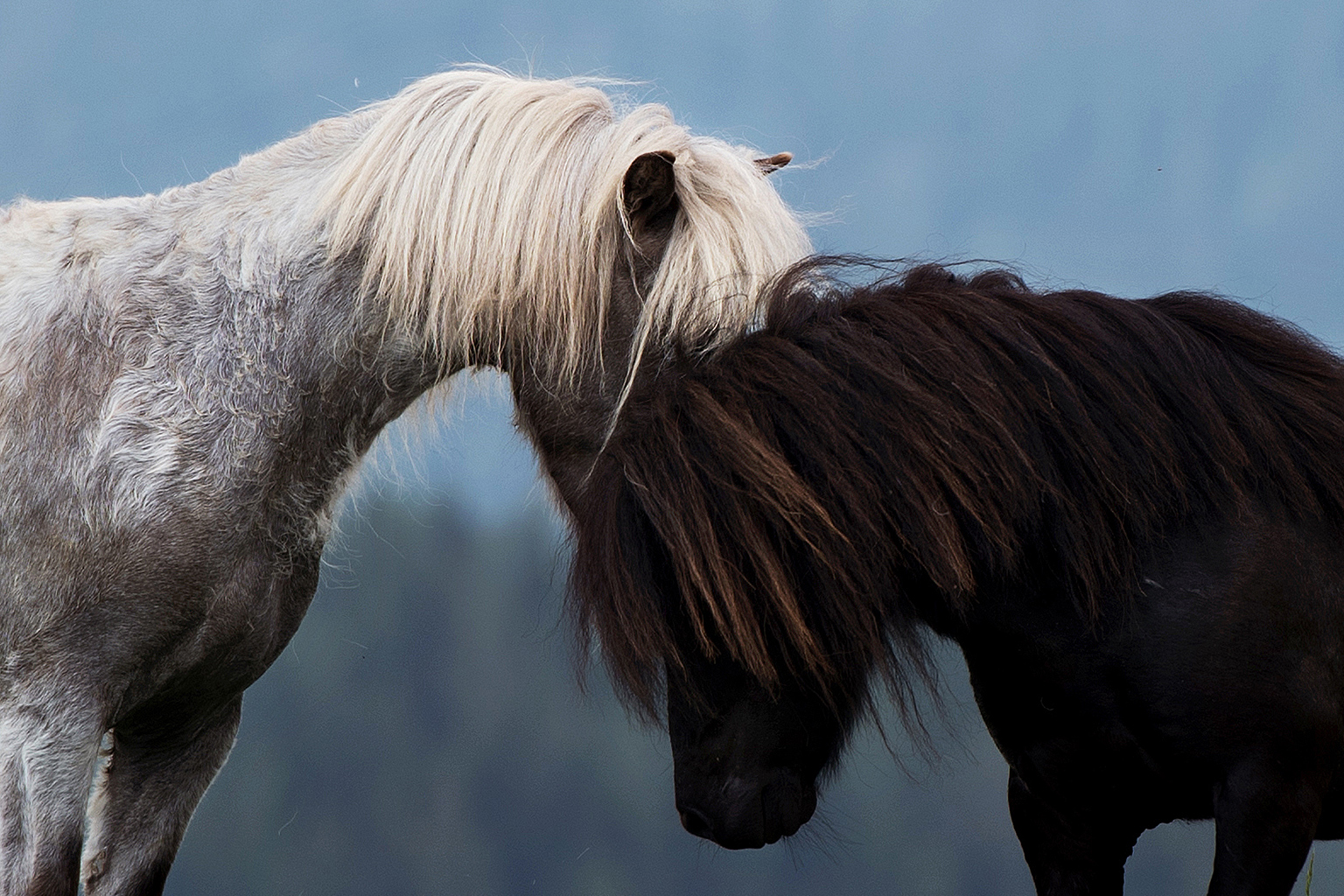
First approach or nose-body contact
The two Shetland pony stallions face each other, and make first contact; their different form of expressive behavior is striking: The brightly colored roan rigidly stands on all four legs, and displays a high amount of body tension while sniffing the black horse which, in contrast, gets out of the way, and moves to the left. The high amount of tension in this situation can clearly be perceived: The roan displays an arched neck threat, has a higher muscle tone, and positions himself heavy on the forehand towards the opponent. By comparison, the black horse steps laterally through its left shoulder but keeps contact with the unknown counterpart by turning its head.
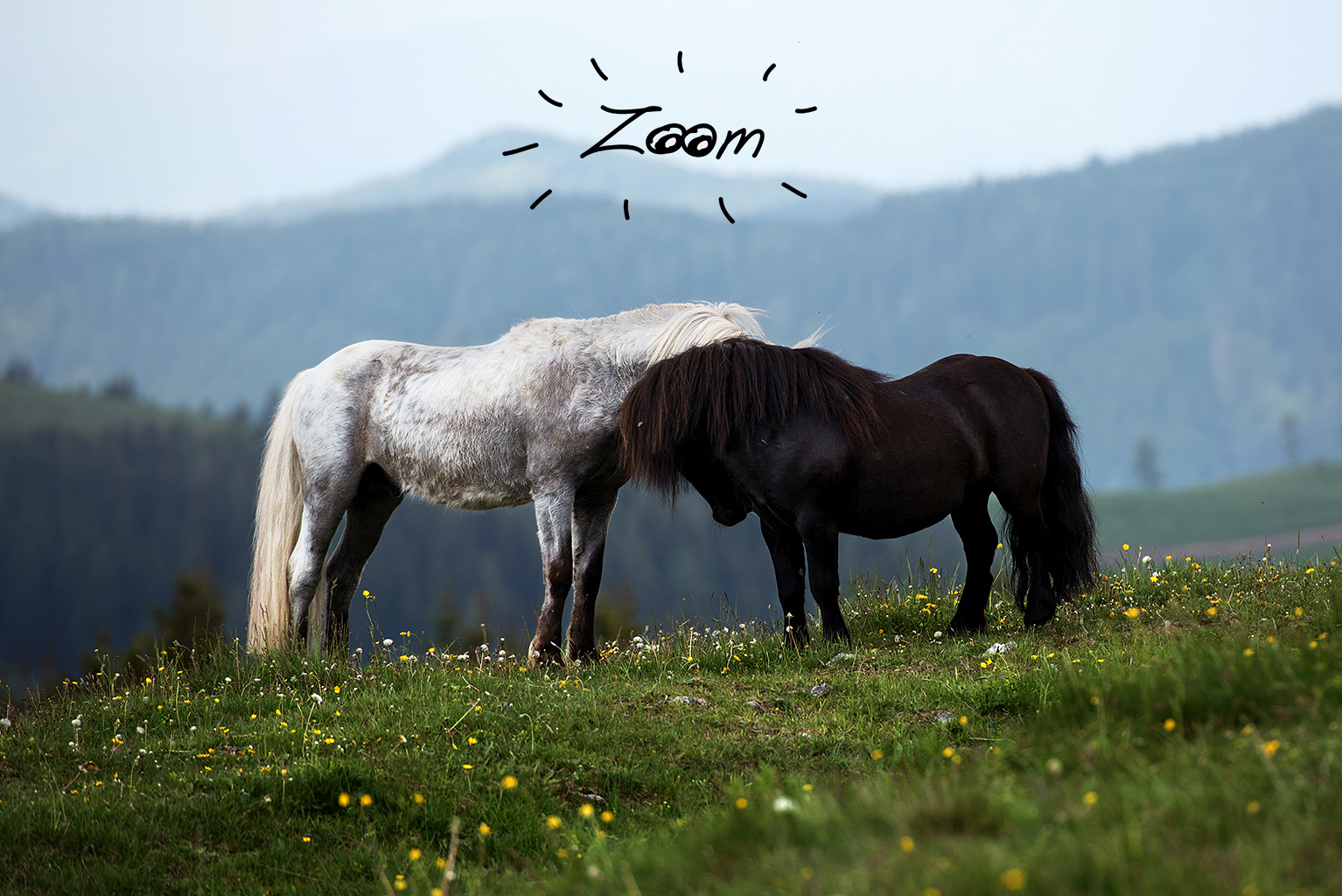
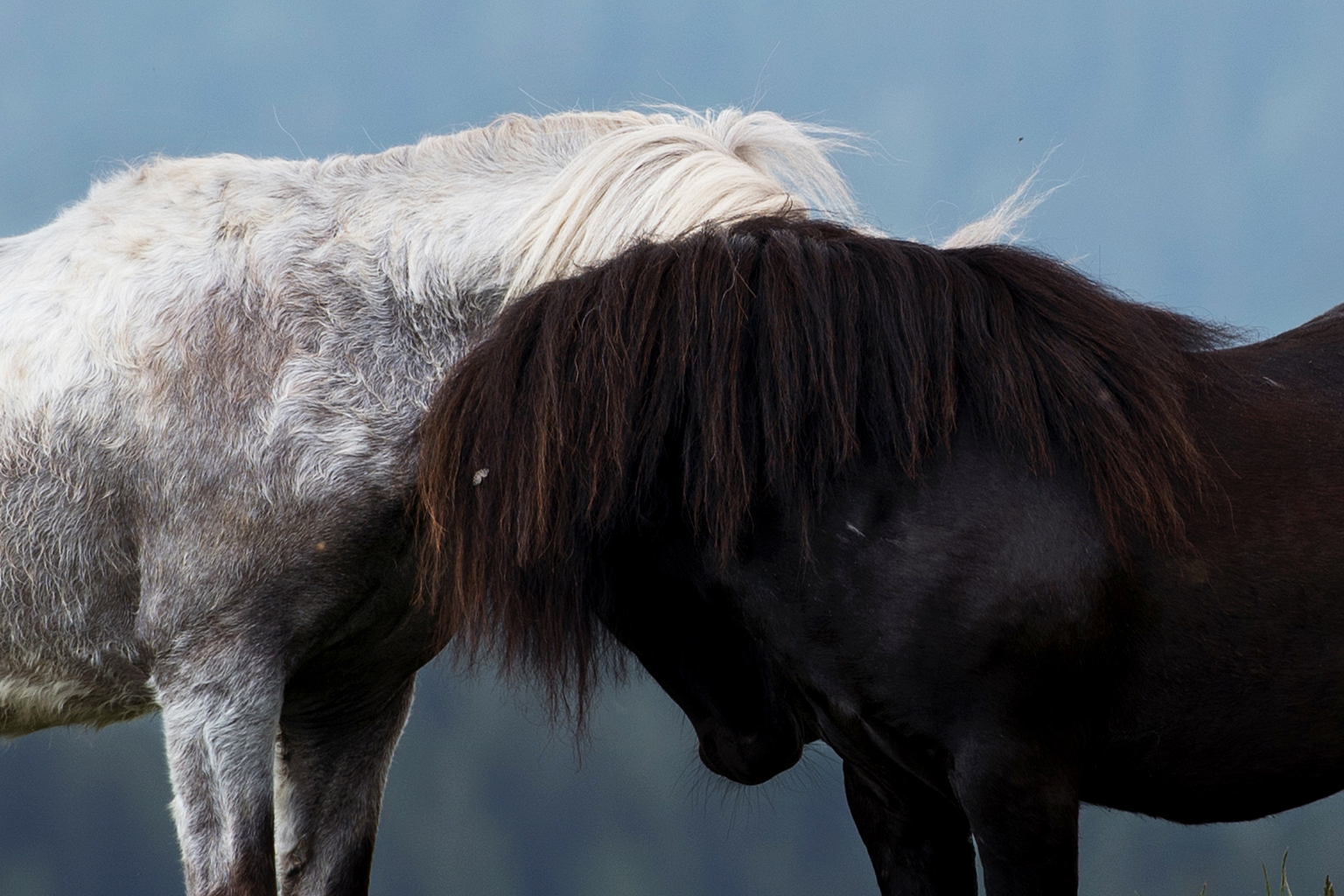
Naso-nasal contact
The so-called naso-nasal contact (sniffing) is the standard greeting ritual among horses. It forms part of the behavior used to show off that is called posturing. The horses usually face each other head-on, and mutually sniff their nostrils. In this scene, the black horse remains in a slightly turned position that signals readiness to escape the situation if necessary.
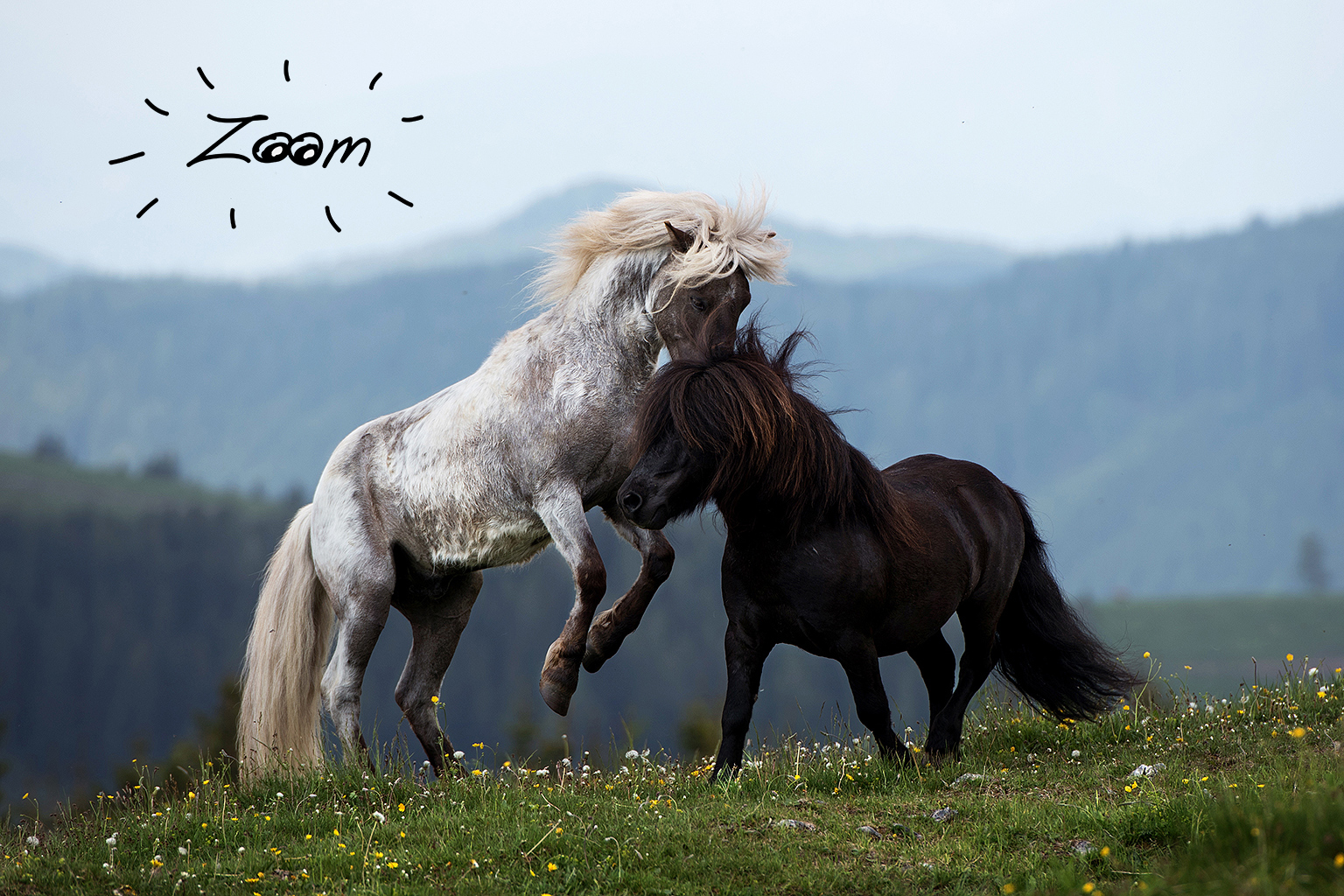
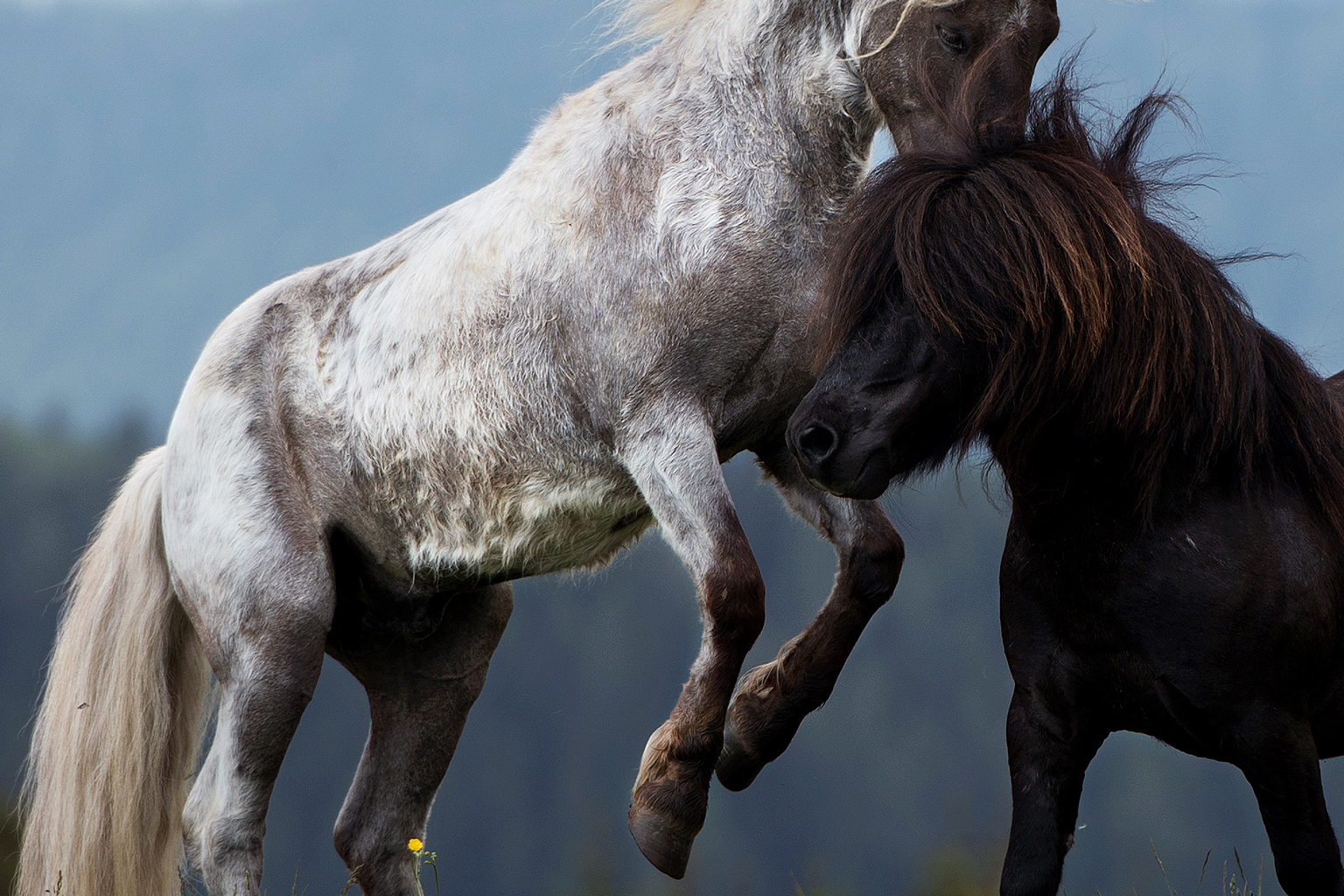
Rearing
After making initial contact, the roan assumes the more active part in the subsequent scene, and rears towards the black horse while simultaneously displaying his imposingly arched neck. He cleverly chooses to direct his attack towards the black horse’s shoulder in order to drive the opponent. The black horse, however, is able to dodge by moving forward and to the left; this has already been suggested by the previous picture. Additionally, we clearly see the nostrils that are wide open if we zoom in on the picture.
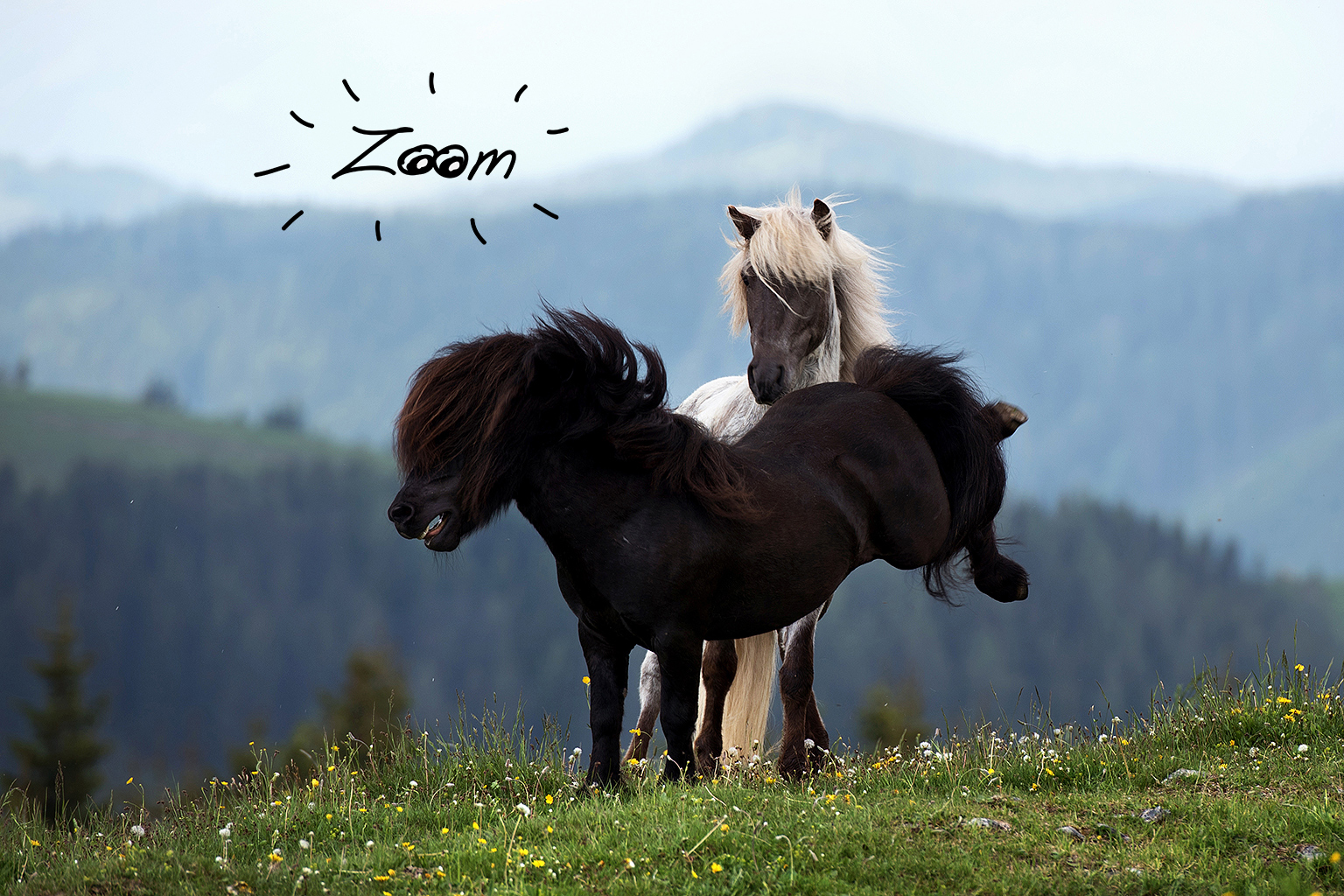
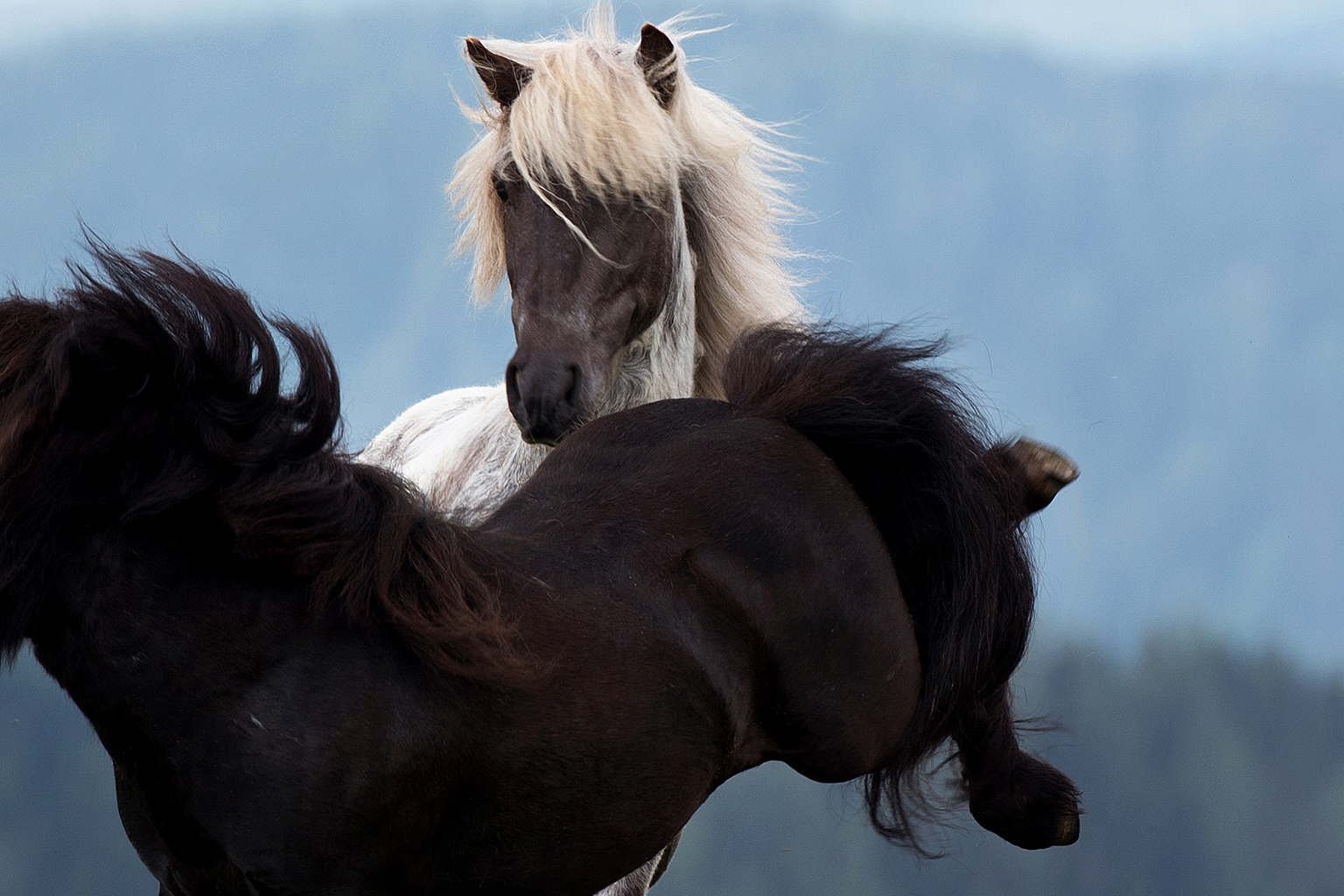
Hindquarters kick
Yet, the black horse only moves to the side a bit, and, from his new position, has the opportunity to counter with a stereotypical backhand stroke towards the opponent. This is a genuine defensive threatening gesture as he intentionally kicks the air directly next to his counterpart; his mouth is wide open, and his nostrils are still fully dilated and firm in their edges during the hindquarter kick. The roan dodges slightly to the side, and observes the black horse with pricked ears. The roan’s nostrils keep their oval shape, and clearly illustrate a lesser amount of excitement in this moment.
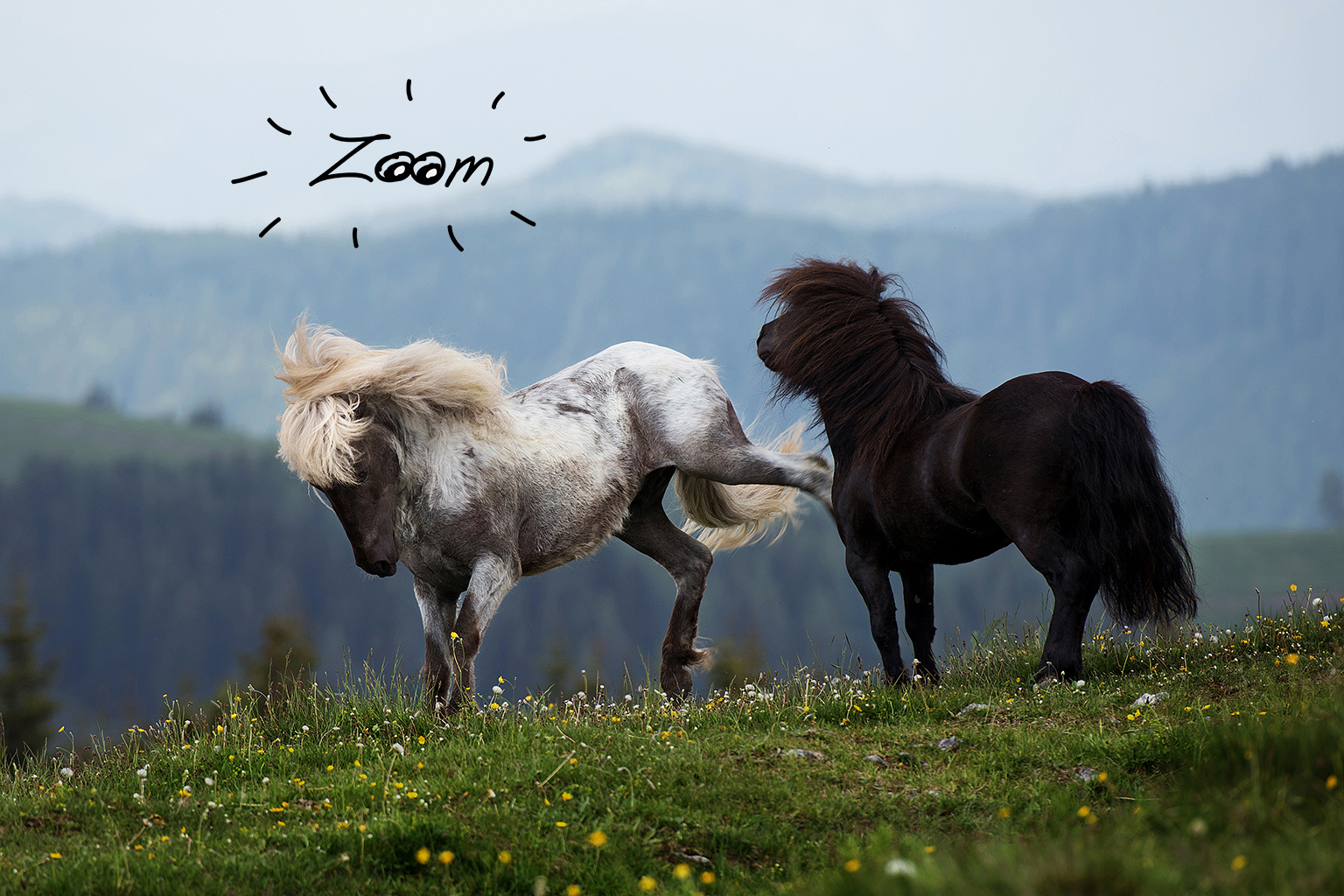
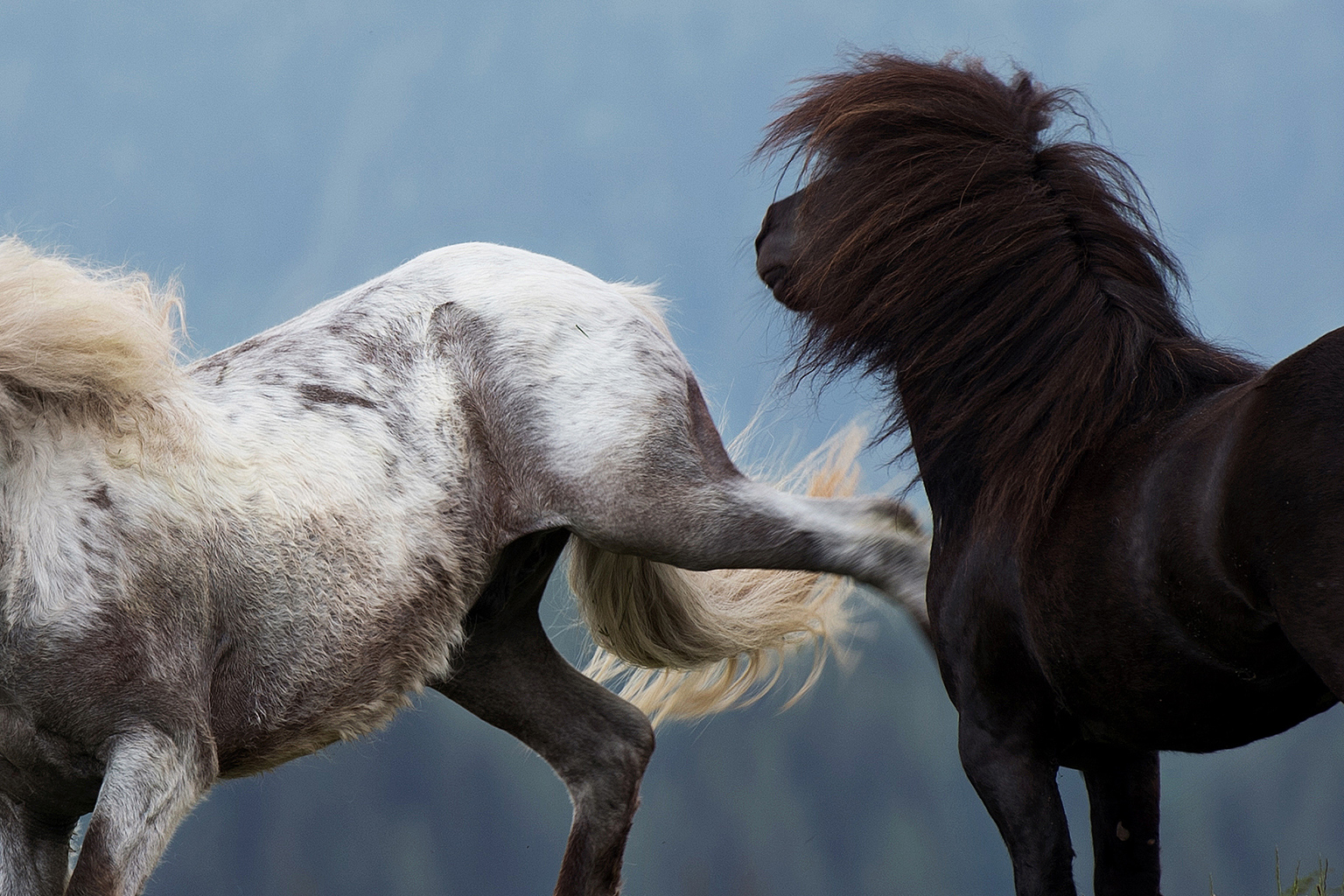
Hindquarters kick, second round
Moments later, we see the roan counter with another hindquarters kick in the air. It is again a form of ritualized fight without intention to injure the other; still, his elongated upper lip indicates an increased level of excitement. Similarly, the black horse perks up its head, and also displays an increased level of excitement in this situation by showing an elongated upper lip.
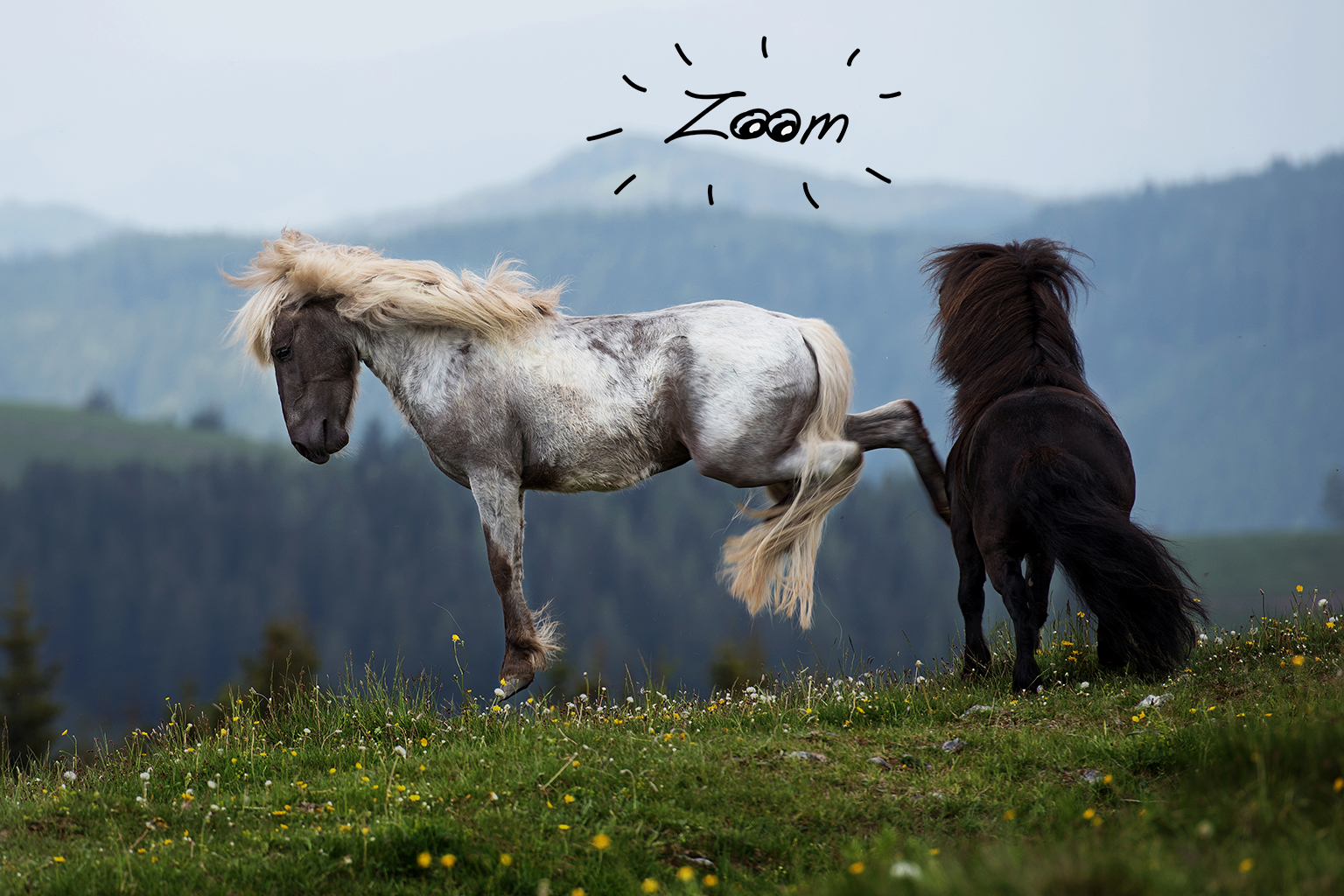
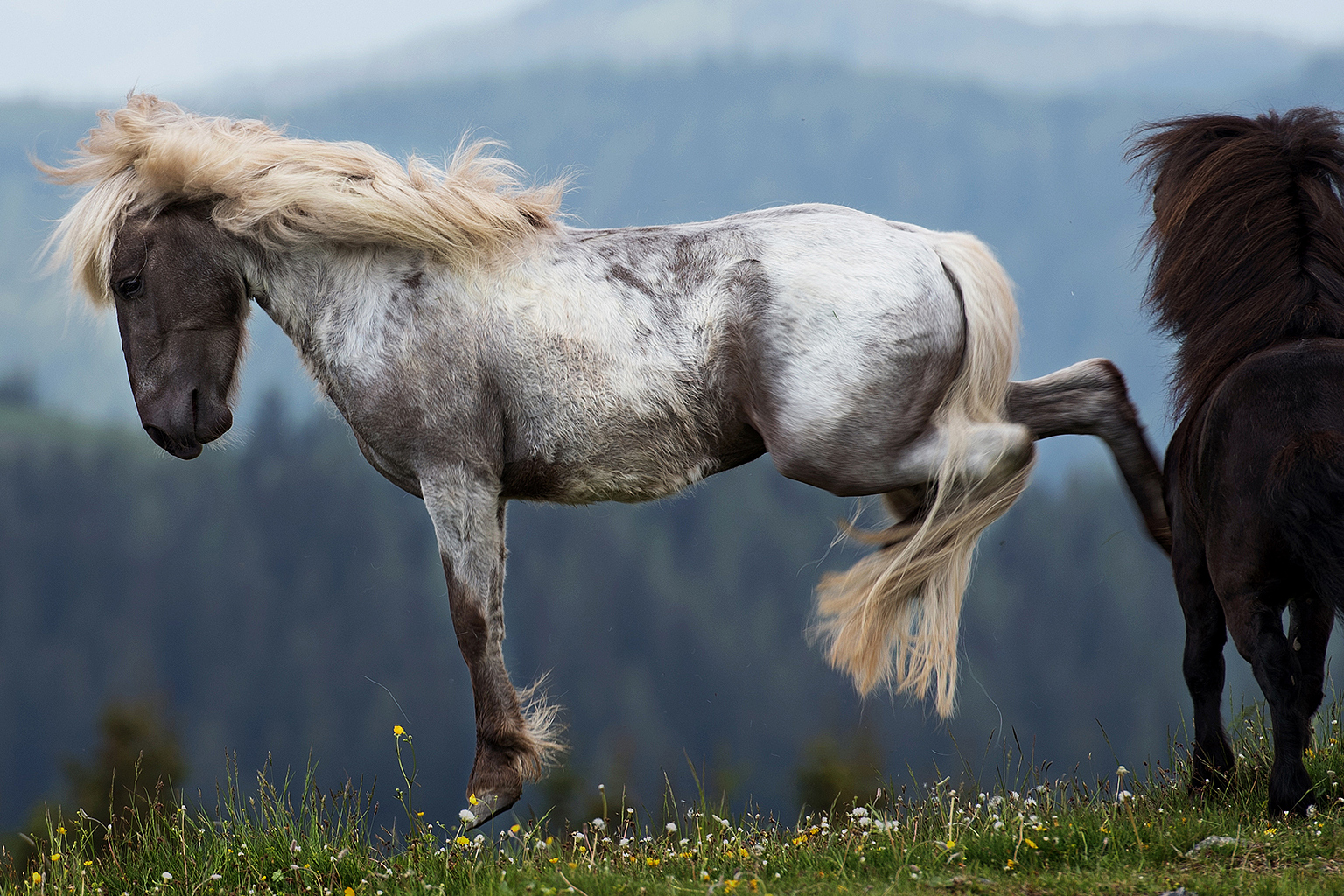
The capriole
Next, the roan performs another hindquarters kick with the other leg, and follows with an energetic capriole lifting both forelegs; his extremely elongated upper lip, his thickened lips, and his ears that are pinned back to the head are noteworthy. The black stallion dodges by leaning back to the hindquarters, and again perks up his head.
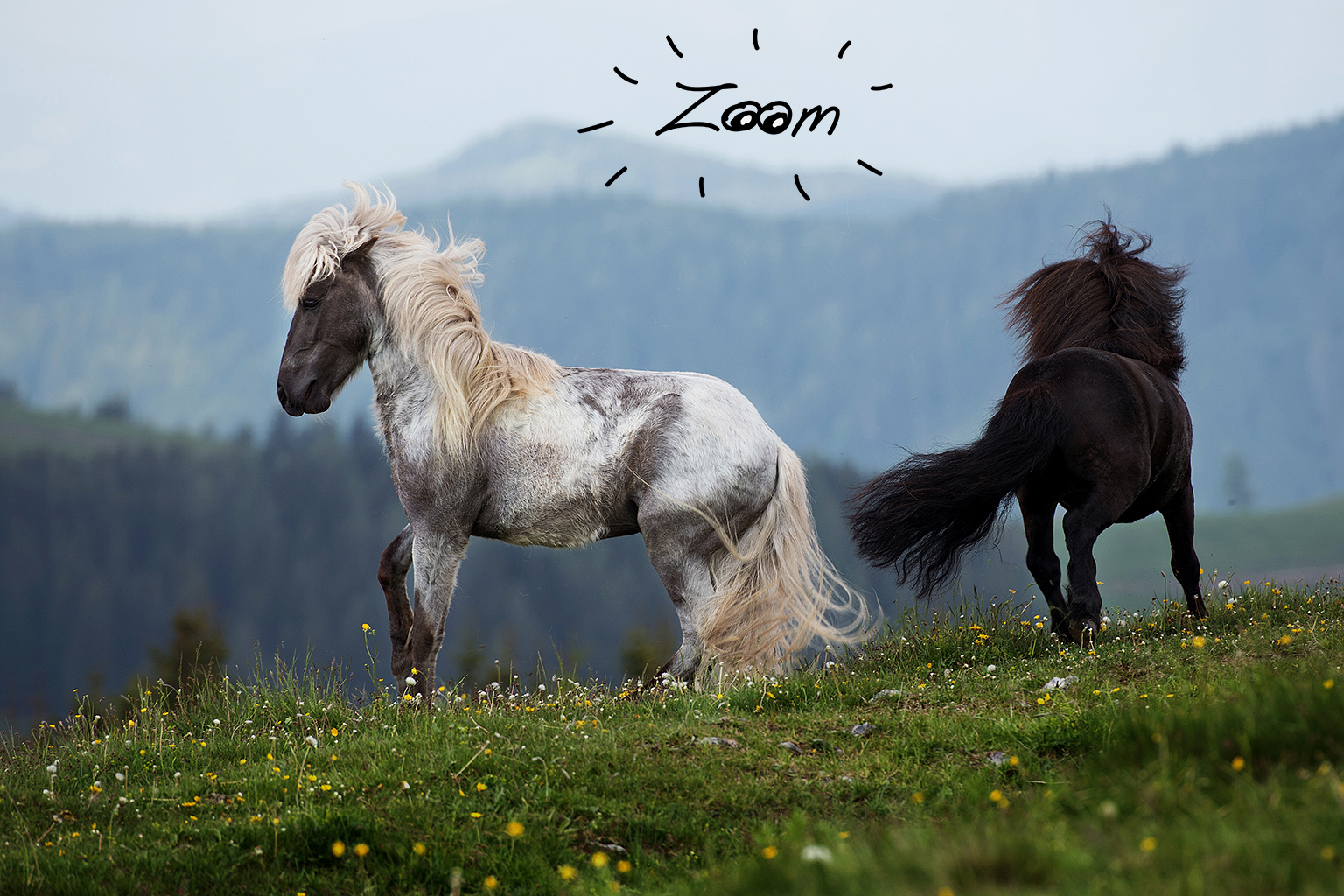
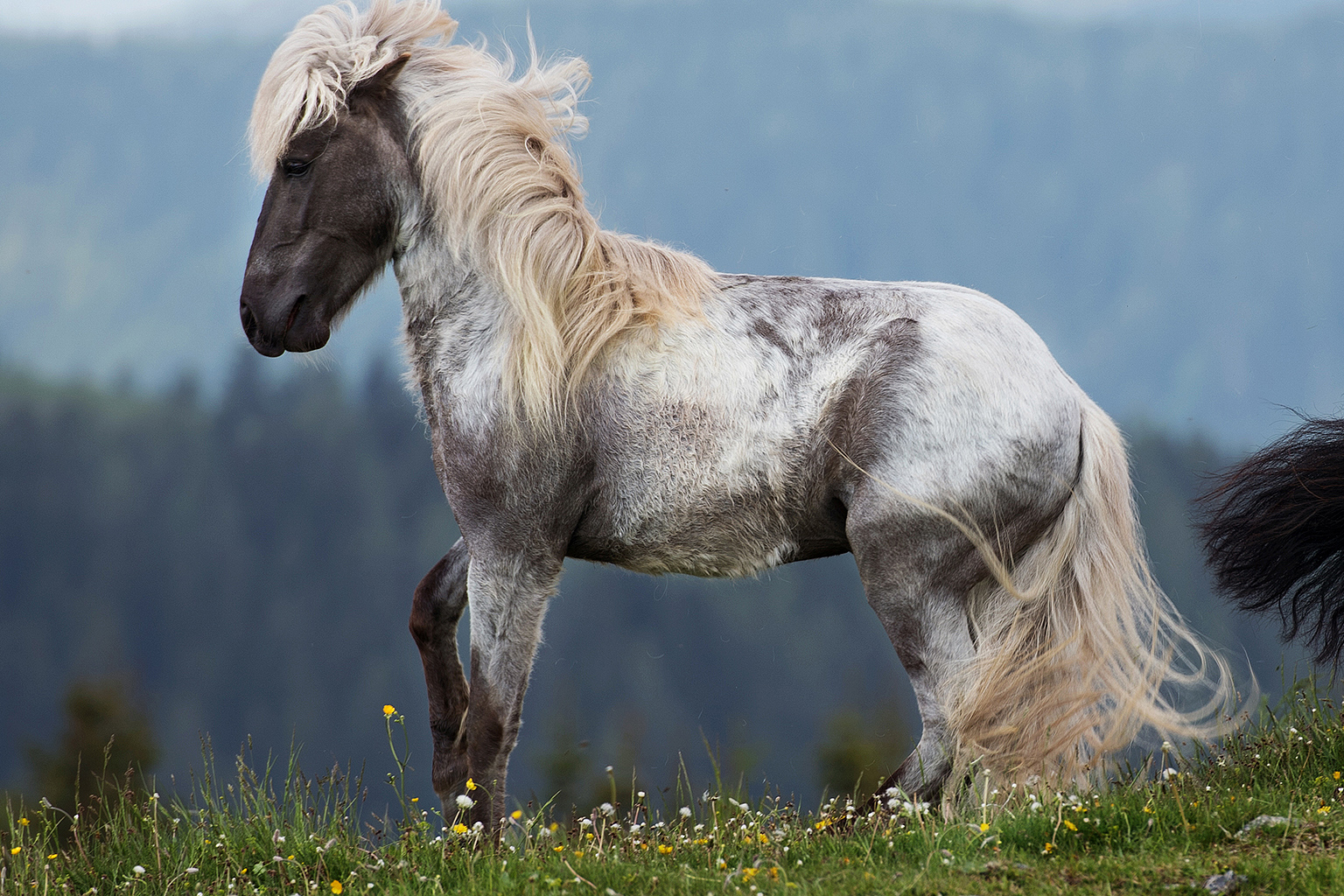
A schoolhalt?
Immediately, the roan lowers its croup as much as possible, and lifts its chest; in doing so, the stallion prepares to perform another capriole. The black horse escapes straight ahead.
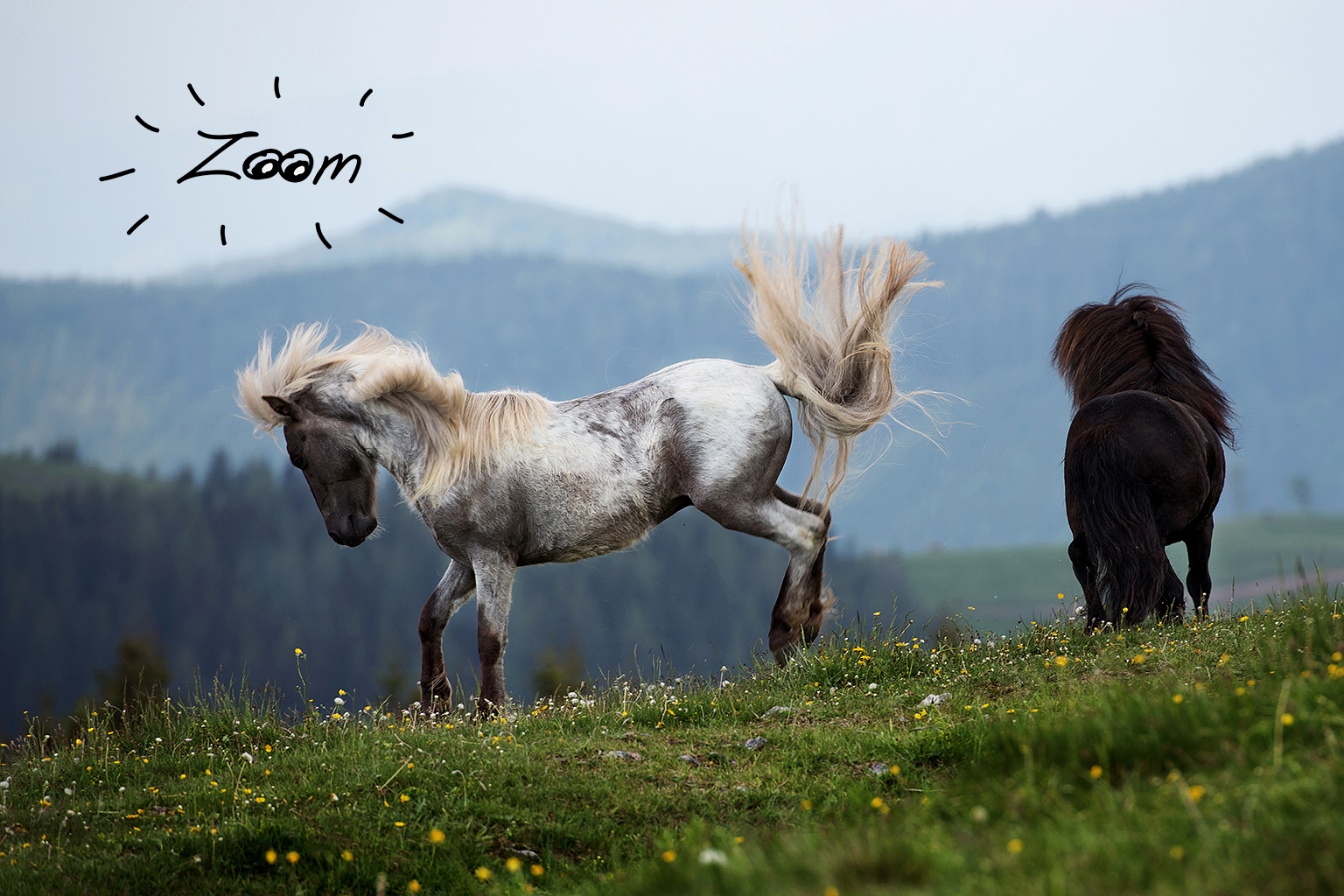
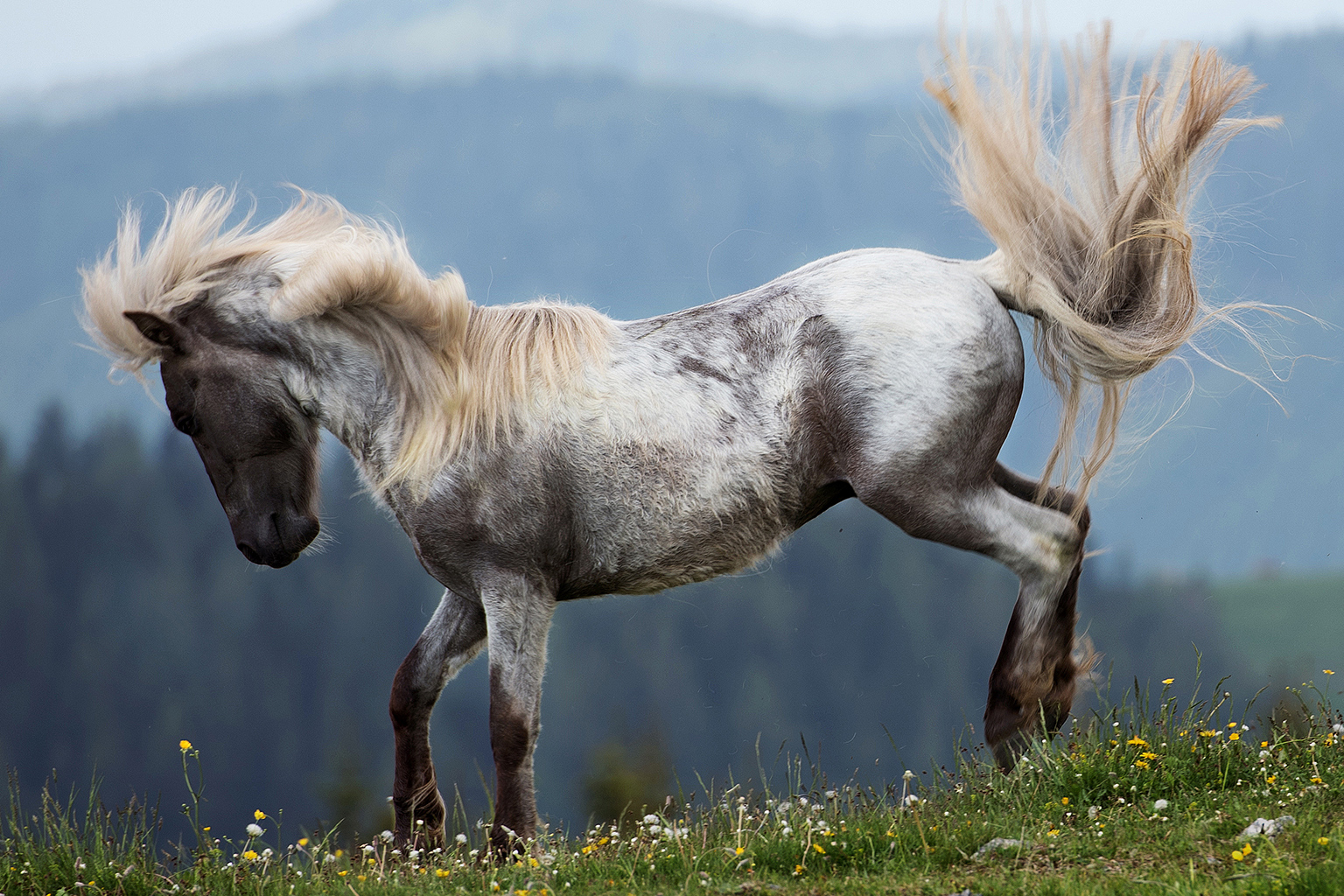
Final kick
Eventually, the roan lunges with a final low kick, and the ritualized fight between the two stallions ends; the black horse moves away, the roan remains at the scene of events, and thus asserts his dominance just the way he had demonstrated it all through the entire sequence.
Marlitt Wendt & Conny Ranz


